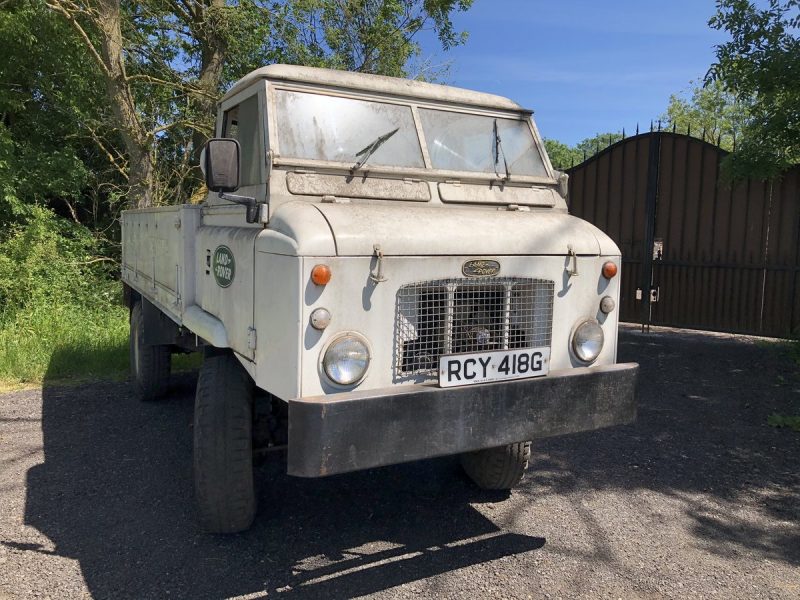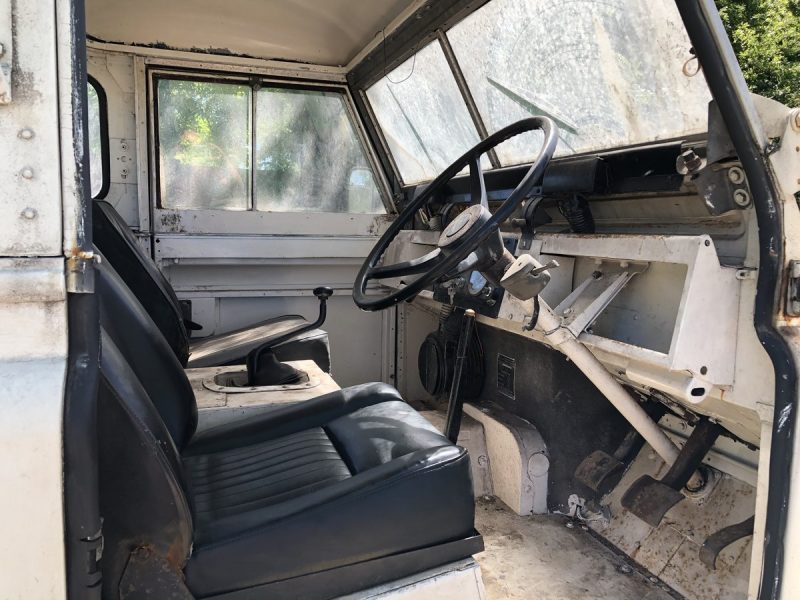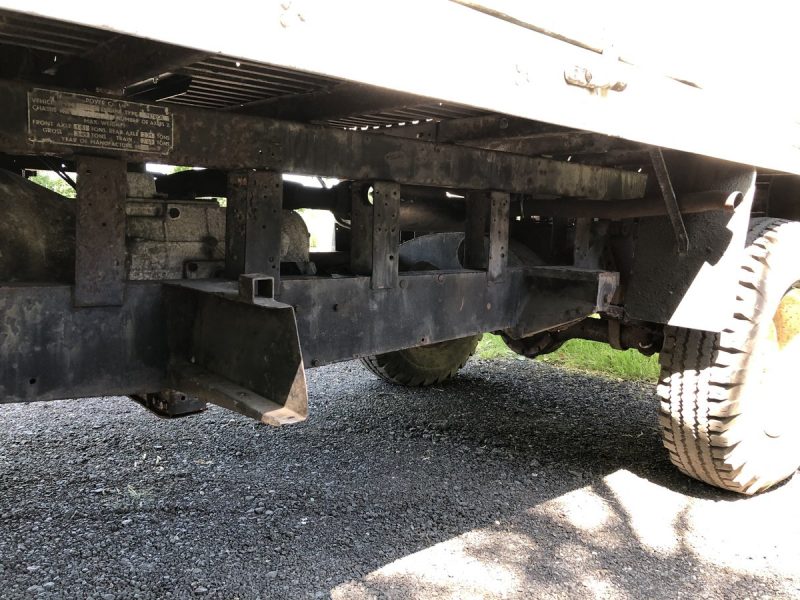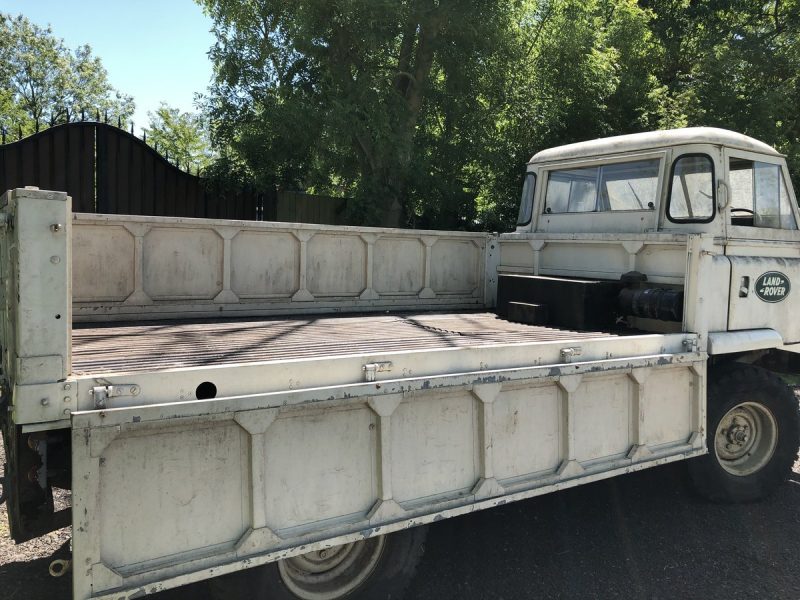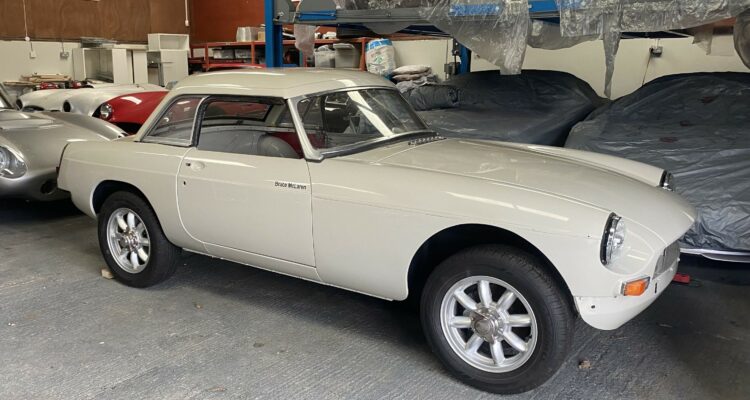1969 Land Rover Series IIB Forward Control – Project Profile
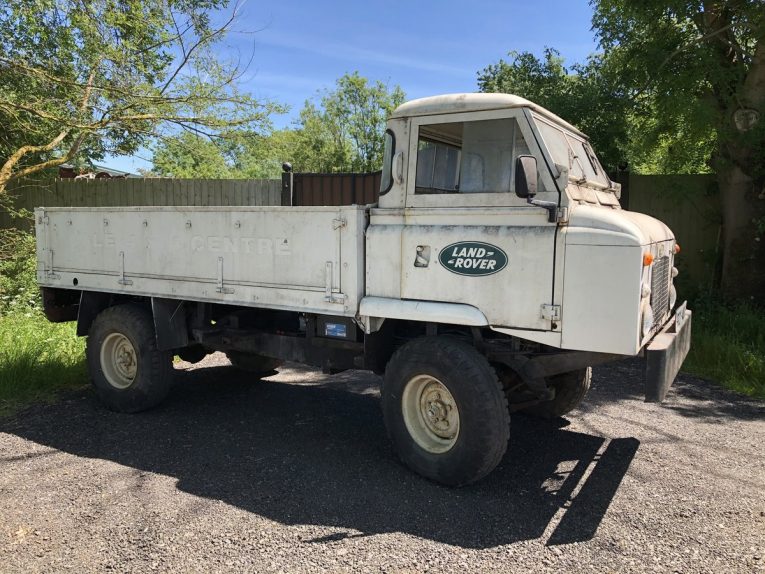
There is something deeply appealing about a vehicle that can do anything and that can go anywhere. There is also something appealing about a vehicle that possesses heaps of potential. One vehicle that has always delivered both in spades is the Land Rover. It’s a rough, rugged, go anywhere kind of machine that is simple to work on, and thanks to a vast and thriving aftermarket, simple to build to suit whatever purpose you desire. When you look at an old Land Rover in potential terms, you can see why they were, and indeed still are, so popular. They’re full-size Tonka toys, but with an engine. And who doesn’t love that appeal?
As you may have guessed from the image above, though, we’re not talking here about a Land Rover that’s as instantly recognisable as a ‘series’ model. No, this week our Project Profile cross-hairs are trained on a Land Rover with a bit more umph, and with it, a lot more potential.
What is it?
Some of you will recognise the Land Rover here, others may not. For those in the latter camp, what you’re looking at here is a 1969 Land Rover Series IIB Forward Control. This is the second forward control vehicle, with the first being, predictably, the IIA. The IIB was simply an evolution of that. It may look wildly different, but really it’s just a traditional Land Rover chassis but with the cab and controls moved to sit over the engine rather than behind it. Land Rover’s reasoning was that it would make the vehicle even more useful, as there was more free chassis space to fit whatever body the end user saw fit. Some were used simply for carrying, as is the case here. Others were ambulances, personnel carriers, fire engines, the list goes on.
The IIB version boasted a wheelbase of 110 inches (the IIA was 109). It had tougher axles with a wider track (designed by ENV) for better stability, along with a front anti-roll bar and rear springs that sat above the axle rather than below it. It had 16 inch steel wheels on which chunky off-road tyres were mounted.
Power wise, the IIA was considered to be vastly under-powered with a 2.25 petrol engine. As such, the standard engine in the IIB was a 2.25 diesel, which of course meant more torque and (marginally) better economy. However, that’s moot here, as this particular Forward Control has been fitted with a 3.3 Perkins diesel engine. It’s also got the strong LT95 four-speed manual ‘box on the back of it – this is the one with a built-in transfer case.
As we mentioned, this particular IIB Forward Control has been built for carrying, as evidenced by the drop-side body. However, that doesn’t mean it has to stay like that. The world is very much your oyster here. Camper, race transporter, off-road oddity – the choice is yours.
Why is it a project?
There isn’t a wealth of information on the advert other than the mention of the Land Rover having been stored away in a barn for many years. And that certainly seems to be the case, as the old beast looks to be reasonably solid, which is great, as these chassis absolutely love to rust. The vendor states that it has had four previous owners, and the mileage is an indicated 20,000. However, that 3.3 Perkins has been fitted, so you’d need to find out how many miles that has racked up over its life.
While we’re talking about the mechanics, there is that engine and LT95 transmission. The vendor also states that there has been a new clutch fitted, a new battery, new coolant and it’s been given an oil change.
From what we can see, the old Forward Control is an up and running machine, but one that needs a bit of a tickle and a bit of love before it hits the road again. There is no current MOT on the vehicle, though due to its age, it is MOT exempt. However, if it’s been laid up for a long period, we’d want to get a fresh test on it for peace of mind.
Crucially though, it looks pretty decent. It’s running and driving care of a much stronger, more powerful engine arrangement than standard and it appears to be free from any major rot. As such, we’d look at it as a vehicle needing minor recommissioning before being used, either as is, or as the basis of a bigger project.
Five things to look for:
1) Chassis
It looks pretty solid in the pictures, but there is no escaping that this is a Land Rover, so a thorough check is needed. Not only for rust, but for any past, dodgy repairs.
2) Engine
It’s great that this Forward Control has a 3.3 Perkins, but when was it fitted? What’s the mileage of it? Has it been fitted to a good standard, or has it just been thrown in there?
3) Paperwork
In light of the new engine, has the paperwork been updated accordingly? If not, you’re going to need to make sure everything lines up for legal reasons.
4) Tyres
We wouldn’t normally make a point of tyres, but they’re big old hoops of rubber on this sucker, and it will cost a pretty penny to replace if needed, so check the condition of them.
5) Body
The body looks good, and the front section is aluminium, so should be free of corrosion in the most part. The rear bed, however, is steel, so you’ll need to check the mountings, check for any damage and check for any serious corrosion.
What should you do with it?
If you dream it, this Landy can do it. With a machine like this, the options are limitless. You could give the Land Rover a freshen up and use it as is – that big bed on the back would make it an incredibly practical load-lugger. It is, after all, what it was built for.
You could of course, go the other way. There is a lot of potential here, so how about building a unique race car transporter? You’d have to build the body from scratch, of course, but it would be cool when done. Or, what about a camper? Imagine building a simple cabin on the back, somewhere to sleep, some running water, a wood burner. Then you could go camping where no other vehicle ever has, thanks to the Land Rover’s off-road abilities. Bliss.

